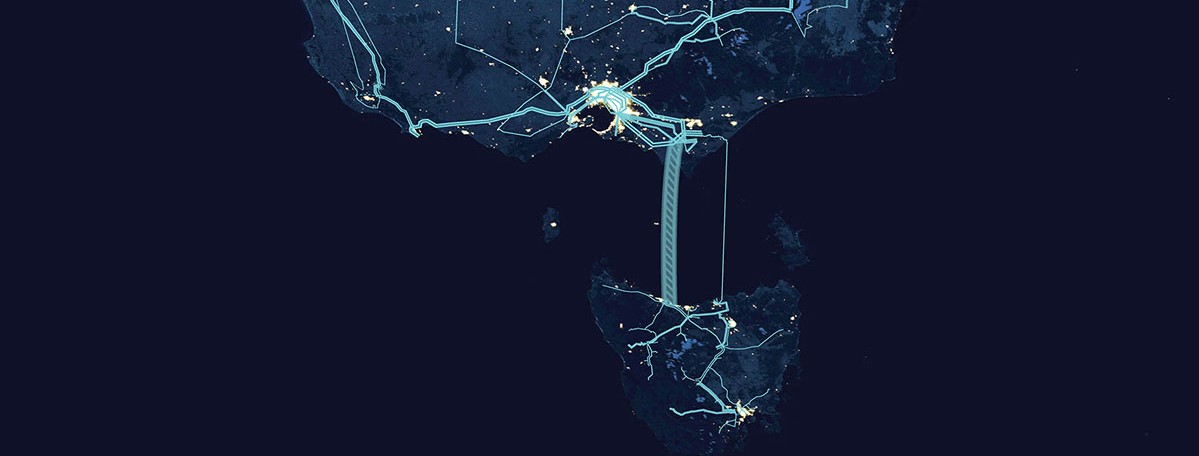The Marinus Link — a second underwater energy cable across Bass Strait — was first proposed in 2017; it has recently moved from a possibility to a concrete project recognised by AEMO and the Federal Government. But plenty of questions remain about the $3.5 billion development, including who will pay for it.
In the lead up to Energy Week, we asked Bess Clark, General Manager Project Marinus from TasNetworks to give us the latest update… and to answer the hard questions.
What is marinus link and why is it important?
Marinus Link is a proposed 1500 megawatt capacity undersea and underground electricity connection to further link Tasmania and Victoria as part of Australia’s future electricity grid.
The increased transmission capacity will be delivered in two 750 MW stages. Marinus Link is supported by transmission network developments on the North West Tasmanian electricity network.
Marinus Link and the supporting North West Transmission Developments are important because they support Australia’s continuing transition to a clean energy future, enabling clean and reliable energy exchange.
Together they will create billions in economic growth, thousands of jobs, and be a source of skills, training and workforce development in regional Tasmania and Victoria.
Interconnectors like Marinus Link are an important feature of the future energy landscape. They allow power to flow between different regions (i.e., between Tasmania and Victoria), including to enable the efficient transfer of electricity from renewable energy generation zones and storage resources to where the electricity is needed. Interconnectors can increase the resilience of the National Electricity Market (NEM) and make energy more secure, affordable and sustainable for customers.
Interconnectors are common around the world, with more coming into service to harness diverse generation, load and storage sources in transforming energy systems.
How does Marinus Link work with big-batteries?
Storage is important for firming supply, and preventing excess renewables being wasted, making better use of resources. The NEM needs all storage options on the table, including cost-effective deep-storage. Large and small-scale batteries have an important role to play to provide short-term storage, with deeper storage needed where demand outstrips supply for more than a few hours, including over many days.
Marinus Link provides greater access to Tasmania’s existing and potential generation and storage capacity, including hydro-electric generation storage capacity, and some of Australia’s lowest cost wind resources and pumped-hydro storage potential.
The present Tasmanian generation system has a total capacity of more than 2600 MW and includes 30 power stations and more than 50 major dams – which act as storages. This capacity is nearly twice the size of Yallourn Power Station (1480 MW). The headwater storages in Tasmanian’s hydroelectric system can store several months of energy which can be released on demand.
Marinus Link and the supporting transmission developments in North West Tasmania also unlock access to variable renewable resources, including wind and solar resources in Tasmania and Victoria. This will allow greater use of these variable resources to meet customer energy needs, allowing the existing Tasmanian hydro-electric resource to play more of a storage, or capacity, role, than it presently does.
Marinus Link will also allow greater access to the diversity of load, generation and storage profiles across the NEM, with bulk energy able to be shared between the states. For example, Marinus Link will enable access to reliable generation and long-duration storage resources to support mainland Australia during extended heat waves, predicted to become more intense over the coming years.
Who benefits from Project Marinus and who should pay?
Analysis shows that customers in all regions in the NEM benefit from downward pressure on wholesale energy prices with Marinus Link in service. The cost of Marinus Link should therefore be recovered from customers across the NEM.
How confident are you on your cost estimate and delivery schedule
We are confident that the cost estimate (~$3.5 billion in 2019 dollars) is appropriate for the proposed scope of work. The cost estimate and delivery schedule is based on ongoing engagement with suppliers, including cable and converter station suppliers; it also reflects the expected timetable for engagement and achieving approvals necessary to commence work. The project is targeting a final investment decision in 2023-24 and commissioning of the first 750 MW link in 2027-28, and the second 750 MW in 2029-30.
How is your community and landowner engagement going?
We are well progressed in our community and landowner activities in Tasmania and Victoria for Marinus Link and its supporting transmission in North West Tasmania. We are listening to feedback from community and directly affected landowners, and factoring this into our decision making. We continue to encourage community members and landowners to get in involved in the engagement process, with a range of future feedback opportunities as Marinus Link and the North West Transmission Developments progress through the design and approvals process.
The agenda for Australian Energy Week includes updates on Battery of the Nation, Marinus Link and other major infrastructure developments across Australia. See the full program here.

